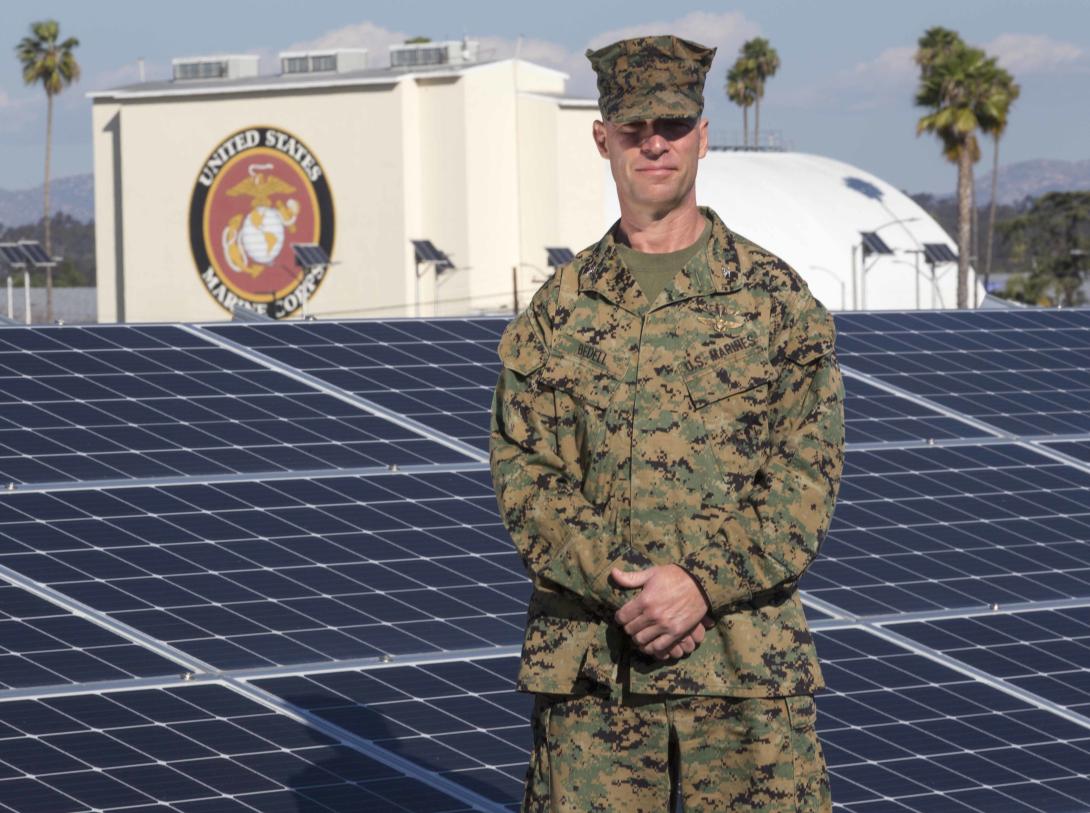A Modern Approach to an Aging Infrastructure
From artificial intelligence to quantum computing, today’s rapidly evolving technology is allowing the brightest minds to help protect and strengthen U.S. warfighters. The latest and greatest capabilities require a foundational approach, however.
“If you walk on any of our bases here on the West Coast, it is 1942,” said Brig. Gen. Nick Brown, commanding general for the Marine Corps Installations West at Camp Pendelton. “The concern is, [with] our new advances in energy and new advances in science, is the base even equipped to accept that? Is the base equipped to integrate those things?”
Speaking at the WEST 2025 conference in San Diego, Brown highlighted the disadvantages posed by aging infrastructure. To further break down his cause for concern, Brown drew an analogy to the 1985 film, Back to the Future.
“Remember, Doc had come up with this thing called the Flux Capacitor, but he needed something that would go 88 miles an hour to activate it. And by God, if he didn’t have a DeLorean to do it,” he told his audience and fellow panelists. “So, I am charged with putting a flux capacitor in a 1995 Mazda; that’s basically what Camp Pendelton is right now.”
Looking at the current infrastructure landscape, Brown said there’s a crucial need for a DeLorean type of vehicle that will modernize at scale and at speed. Similarly, he said, there is concern for the service’s ability to adapt and innovate at the “speed of relevance.”
“Things are happening so fast: the speed of technology, the speed of science, the speed of academia when it comes to energy and new advances. If we are not able to adapt at the installation level, at that speed or close, we are going to lag behind and be an impediment to operational, expeditionary operations,” he stated.
The answer is in making smart investments and embracing a forward-thinking approach, Brown continued. “We need to be able to think about what technology is going to look like in 2045 and 2050.” Right now, he said, the force is not equipped to do so.
If we are not able to adapt at the installation level, at that speed or close, we are going to lag behind and be an impediment to operational, expeditionary operations.
Echoing Brown’s statement, Rear Adm. Brad Rosen, commander, Navy Region Southwest, spoke on the success of Marine Corps Air Station Miramar, which completed its microgrid installation in March 2021. The project made the air station “one of the most energy-forward defense installations in the nation,” a release stated.
There’s a vital need for energy that’s reliable, resilient and efficient, Rosen told the audience. One of his challenges is highlighting the importance and impact of energy systems that have an operational impact. “The reality is that all of our bases today, for the most part, are reliant on outside the fence line for their support, both in terms of power, water and all utilities,” he said. The Miramar microgrid installation is the goal for all installations.
“I’d say the gap we have as an organization is the ability to move fast and the ability to reiterate on that problem and continue to move fast,” added fellow panelist Andrew Higier. Higier currently serves as the energy portfolio director at the Defense Innovation Unit. “The reality is, these problems arise quickly and then change all the time, so if we can’t move fast and get the technology in the department to solve their problems quickly, then we’re going to fail.”
WEST is co-hosted by AFCEA International and the U.S. Naval Institute. SIGNAL Media is the official media of AFCEA International.




Comments